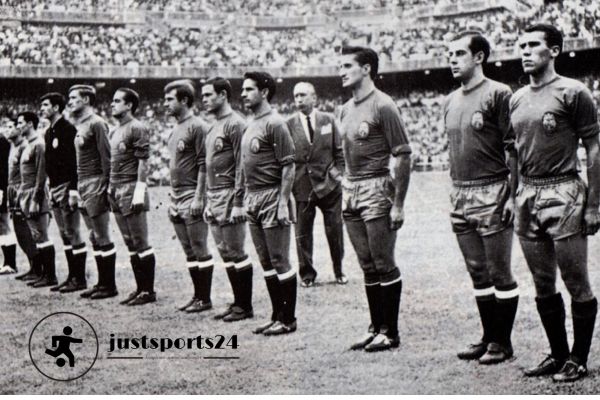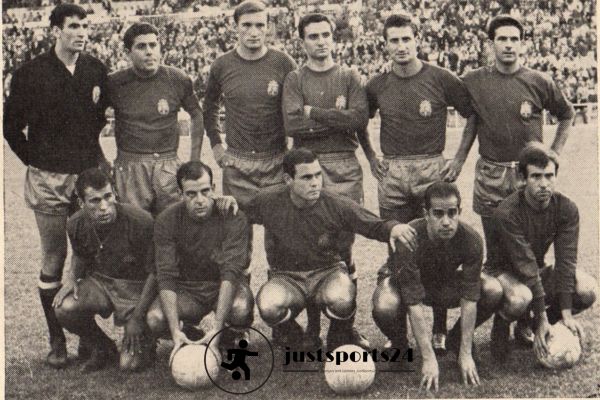As the very first European Championship of 1960 came out a success, there were great expectations for the next tournament. The 1964 European Championship not only sequestered the previous momentum but also presented a great leap in the evolution of the competition. This blog post features some key events of Euro 1964 and explains why this tournament was crucial for the development of the competition after that.
The Steps Leading to the 1964 European Championship

The history of the 1964 Second European Championship began from the moment when this stadium was selected. This event happened in Spain and this country was prosperous in terms of international football at that time. The success of the tournament was evident in the growing interest and level of competition in football across Europe.
Qualification and Format
There were a few crucial changes in the format of the 1964 Euros that made it even better than the first one:
Qualification:A total of 29 teams were willing to compete in the qualification step of the 1964 Second European Championship. The procedure for qualifications took various forms including a series of home and away games, which saw 8 teams qualified for the final tournament.
Final Tournament:A final tournament as such did not take place in the first tournament, whereas the 1964 Euros had four teams in the final stage of the tournament. Two semi-finals, a 3rd place match, and a final in that order were played in this round taking the cup format.
The Hosts and Teams
Spain was selected to be the organizer of the 1964 Second European Championship. Even for them, it was an opportunity to display their love for the game on the European platform. There were four teams to compete in the tournament final:

Spain: Being a host of the tournament, Spain was rated among the favorites to emerge victorious. The Tampa team coached by José Villalonga was very competitive and tactically equipped with a good team.
Soviet Union:The USSR who won the first UEFA championship in 1960 looked forward to and came back with defending credentials.
Hungary: Famed for its history of success in this beautiful game, Hungary was a tough side to play against as it was composed of old guard and young upstarts.
Denmark: For the first time since the relaunch of the competition in finals, it ranged as an outsider against all odds but set its sights on performing.
Key Matches and Moments, Second European Championship
Probably the most memorable European Championship was that of 1964. Here’s a look at the key highlights:
Semi-Finals
Spain vs. Hungary: I would say that the best match in the semi-final of this championship was between Spain and Hungary. The Spaniards overturned Hungary 2: 1 as goals from Jesús Mari Lacruz and star forward Louis Suarez propelled them to the finals.

Soviet Union vs. Denmark: In the other semi-final, the Soviet Union took on Denmark. The game ended with the Soviet Union winning the game 3 – 0, as Ponedelnik Metreveli and Ivanov scored in the match.
The Final
The 1964 European Championship final was played on June 21, 1964, at Santiago Bernabeu Stadium in Madrid. The two teams that had contested the finals were Spain and the Soviet Union.
The Match: The team that won the championship is however not as easy to discern. It was a tense and unfortunately gentlemanly clash. With good organization in defense and counterattacking tactics trained in judo, Spain proved still practical. It was only Luis Suarez who broke the deadlock in the 43rd minute of the match when he scored from a superb header.

Outcome: The win entitled Spain to their first European Championship title at the end of the game with the Spanish football team overcoming a 1-0 win over the Soviet team. The victory thrilled the country as it was regarded as a historical milestone for Spanish football and a patriotic event.
Impact and Legacy
The 1964 second European Championship not only changed the evolution of the tournament but European football as well:
Increased Prestige:The success of the continent’s championship has contributed to the growth of the tournament’s prestige and has created great leverage for its possible future editions. The competition gradually started being understood as one of the most substantial marketing football events.
Format Evolution: The final tournament system with four teams introduced also opened up prospects for wider geographical coverage. The changes in formats offered new technologies for the competitions which allowed few members further than increasing the range of participation.
Spanish Football: One of the most important achievements for Spanish football was also this game in 1964. It was the beginning of Spain’s strong dynasty in the international football arena, which lasted through trophies of the World Cup and European Championships to coming ones.
The Euros Today
There have been tremendous changes that have taken place in the second European Championship as compared to the 1964 one. These days the Euros last a month, there are 24 teams, and matches are hosted in more than one city. The championship has developed into one of the most sought-after and viewed football competitions all over the world.
Expansion:With an expansion to 24 teams. National Representation of the teams within their boundaries and in the true spirit of competition grows. The group stage complemented by the knockout stage constitutes a compelling model that encapsulates all the attributes of international football.

Purpose: Everything is thoughtfully correlated, with no separate divisions to explain the tenets of each sub-section One by one the notice about the push notifications appeared on the screen. One by one the notice about the push notifications appeared on the screen and the reader hugged the layout of the notifications and encouraged their development.
Iconic Moments Over the years, the Euros have continued to throw up some iconic performances and cherished moments. The tournament has been transforming soccer as it produced many remarkable experiences for soccer fans, especially from Greece’s triumph in the year 2004 to to back triumph of the Spaniards in 2008 and 2012 in the path of the race.
Conclusion
Opinion The second European Championship in the year 1964 was something of a turning point in the history of the competition. This reinforcement of the previous success, allowed the Euros to expand in the future. Furthermore, Looking at that time, Spain winning the tournament was indeed an essential moment and it showed more and more the relevance of the competition and its metamorphosis within Europe.
As it has been noted here at the beginning, JustSports24 appreciates the past and the present of the European Championship and other leading football tournaments. Furthermore, do not forget to follow our blog where new articles will appear on the topics of the Euros and other sports regularly.

